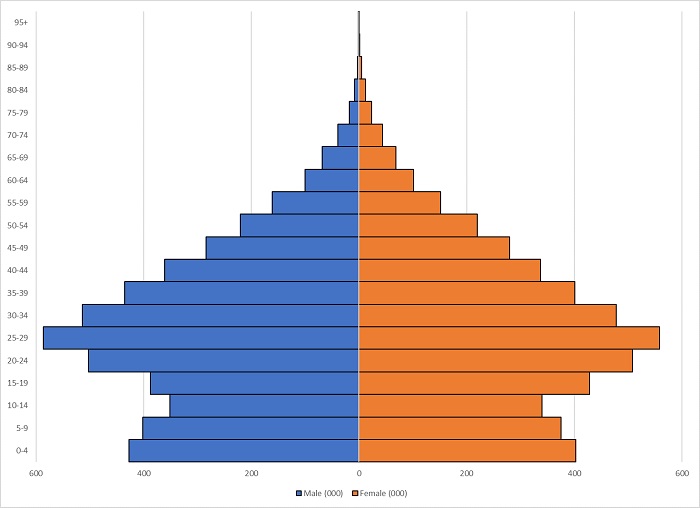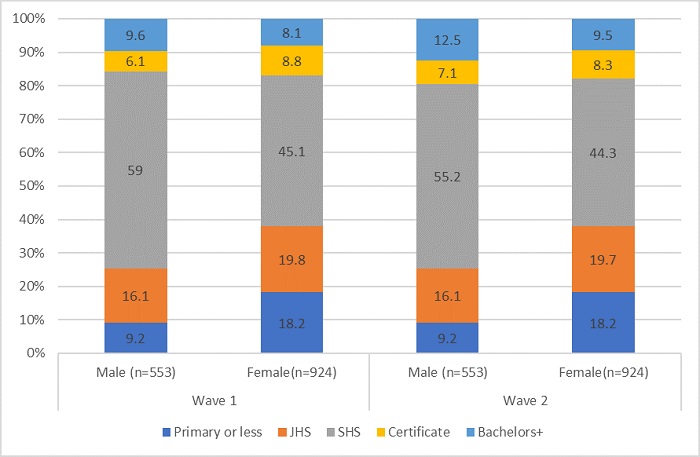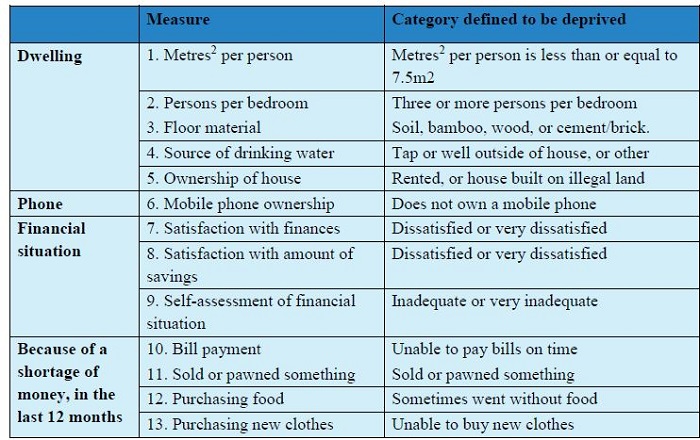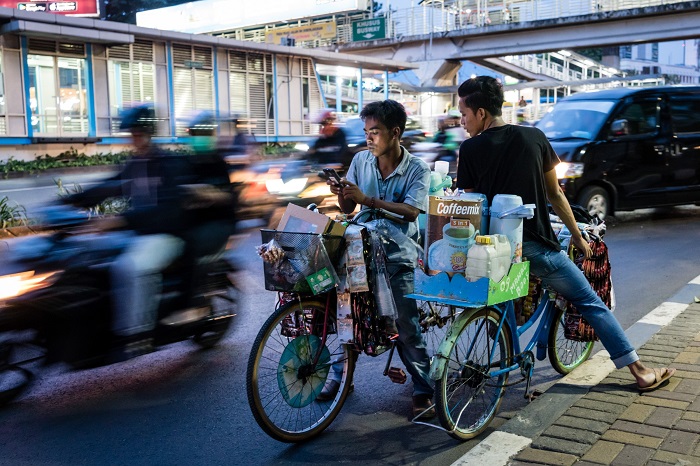Ariane Utomo, Iwu Utomo, Peter McDonald
Versi Bahasa Indonesia
As the election year unfolds, Indonesians are being reminded frequently of the tremendous ‘power’ of the young generation. In a speech in early August 2018, Agus Yudhoyono, poised to run for the vice presidency, articulated his vision for the country using the hashtag #MudaAdalahKekuatan – Youth is Power. Agus pointed out that young adults aged 17 to 35 would account for about 51 per cent, roughly 100 million, of the eligible voters in the 2019 presidential election. Similarly, in a bid to attract these voters, everyone on the current tickets – Jokowi, Prabowo, Sandiaga Uno, and even the 75-year-old Ma’ruf Amin – are portrayed by their respective backers as being the most suitable choice to represent the ‘millennials’.
But who are the so-called millennial voters, and do politicians have a good grasp of what the most pertinent issues are that they face in their everyday lives?
According to media coverage, some of these candidates would have us believe that the average millennial voter in Indonesia is an upper middle class city-dwelling tertiary graduate (most likely living in Jakarta); looking for work with a relatively high starting salary in the creative or digital sector; changing jobs every year because they want to travel; and spending their days leisurely sipping an artisan latte in an instagrammable café, daydreaming about running the Tokyo marathon as they swipe their phone. Nothing could be further from reality.
While this millennial lifestyle may apply to a very select group, it does not represent everyday realities for the vast majority. According to a new longitudinal study, it is not even true for many millennials in metropolitan Jakarta where the average level of education among young adults is the highest in Indonesia.
A demographic bonus?
In 2009, a team of Indonesian and Australian researchers began a large study of young adults in Jakarta, Bekasi and Tangerang, otherwise known as the Greater Jakarta region. The study sought to understand their experiences of transitioning into adulthood. According to the 2010 Indonesian Population Census, there were about 61 million people aged 20 to 34 in Indonesia that year. With marked achievements in literacy and education relative to the older generation, this large cohort of young adults was poised to bring about the country’s so-called demographic bonus.
The demographic bonus, or demographic dividend, refers to the accelerated economic growth that may come about from shifts in a country’s population age structure. A decline in fertility and mortality rates leads to a period where the portion of a country’s population at working age is larger than its portion of young and elderly dependents. For Indonesia, this demographic window of opportunity is predicted to fall in the years between 2020 and 2030 – given the right set of conditions and policies in relation to investment in health, education and infrastructure, and to job creation.
In 2010, individuals aged 20 to 34 made up over a third of the population in the Jakarta (Figure 1). Documenting the complex journey to adulthood among this large cohort of young adults is thus crucial.

The longitudinal study
In 2009/2010, the research team surveyed 3006 men and women aged 20 to 34 living in Jakarta and the adjacent cities of Bekasi and Tangerang to study the factors that affect their progression to becoming secure, independent adults. With a mix of face-to-face surveys and in-depth interviews, as well as self-administered questionnaires for the more sensitive matters (such as sexual behaviour and drug use), the study collected a wide range of information. The survey covered socio-demographics, education and work experiences, health and wellbeing, and attitudes regarding a range of social, political and family issues. From a 34-year-old male pilot with a base monthly salary of Rp.30 million (A$3000) to a 25-year-old unemployed mother who had to make do with a monthly remittance of Rp.1.5 million from her migrant worker husband in Malaysia, the respondents capture the diverse backgrounds of young adults in Greater Jakarta. This rich dataset became the baseline and first wave of the longitudinal study, ‘Greater Jakarta Transition to Adulthood’.
Over the next eight years, researchers catalogued the experiences of these young adults as they went through important life transitions, such as completing formal education, looking for their first job, moving away from the parental home, marrying and having children. The three waves of the study were held in 2009/2010, 2013/2014 and 2017/2018 – the last of which has only just been completed and is yet to be analysed. Individuals in this age group frequently move, making it a challenge to track respondents over time. Forty-one per cent of the first wave of 3006 were migrants to Greater Jakarta, and little over half of them, or 1508 people, were found for re-interview during wave two. Furthermore, migration aside, the many changes experienced by this longitudinal group in that three years makes it clear that politicians and their policies are not ready to reap the benefits of the demographic bonus.
Education and employment
When it comes to employment, the Greater Jakarta Transition to Adulthood Study presented a stark contrast to the images of the urban millennials pushed by politicians. Very few were working in high-tech jobs, nor did we find a young billionaire with a successful start-up. In fact, most of our respondents were not tertiary educated and were struggling with basic needs.
From the first wave of the study, 38 per cent of male senior high school (SMA/MA) graduates were working in very low-level jobs, such as production process workers, machine operators and assemblers. The percentage for women was lower, at 22 per cent, because women with senior high school qualifications had more opportunities to work in the retail sector.
Underemployment for men with senior high school qualifications in Greater Jakarta did not dissipate over the three-year period between the first two waves. For men, both the level of employment volatility (being in and out of work) and level of underemployment during those three years were higher for those with vocational high school (SMK/MAK) qualifications than for those with general high school (SMA/MA) qualifications. Also, very few with a senior high school qualification and a low-level job at the time of the first wave obtained a tertiary qualification between the waves. Further education was not a viable pathway out of underemployment.
Among the returning respondents in wave two, the small portion with tertiary qualifications increased over the three years by just under four per cent for men and just one per cent for women – just one per cent of 20- to 34-year-old women in Jakarta, it seems, picked up a tertiary qualification in three years (Figure 2). While the majority in wave two had completed senior high school or equivalent but not higher (55 per cent of men and 44 per cent of women), about a quarter of the men, and 38 per cent of the women, had only attained a junior high school certificate or lower.
The statistics on the respondents’ levels of education remained relatively stable between the first two waves. Only a handful of the high school graduates gained tertiary qualifications during that time, while hardly anyone who had finished only junior high school in the first wave had, as an adult, gained higher qualifications by the second. In other words, for the majority of respondents, pathways to further education disappear once they leave school. It is almost impossible for them to acquire high school qualifications as adults, or tertiary qualifications. What many senior high school graduates need is pathways to post-school education that are easy to access, affordable, and relevant to the job market.

Change in standard of living
Education is crucial for lifting young people out of poverty and breaking the intergenerational cycle of poverty, as patterns of change in living standards seen in the study demonstrate. To understand the changes, the study measured levels of disadvantage and poverty at each wave.
High disadvantage or perceived poverty is defined as experiencing six or more of the 13 disadvantages listed in Table 1. As they aged by three years, the respondents’ living standards noticeably improved. There was a substantial decline in the number of those reporting dissatisfaction with the amount of savings they had. There was also a very large downward shift in the proportion experiencing difficulties in purchasing clothing and food. However, circumstances deteriorated between the two waves in regard to the number of persons per bedroom (perhaps because of the birth of children), ownership of one’s house (as young people leave the parental home to rent), and sources of drinking water. Crowding was a major housing problem for young families with children, potentially placing the health of the children at risk.

Yet, while the aggregate data shows that the number of those classified as poor fell from 11 per cent to 8.5 per cent between the first two waves, it obscures the volatile experience of poverty. In general, there were many more who went in and out of poverty between the waves than who remained poor throughout both waves.
Poverty and movement in and out of poverty were highly correlated with the living standards of a respondent’s parents when he/she was growing up, and with their own education level. Among men who reported that they grew up in a poor family, just eight per cent had obtained a tertiary qualification, 44 per cent had completed senior high school, and 48 percent did not complete senior high school by the second wave. Among the men who grew up poor but managed to get a tertiary qualification, none was classified as being poor in either wave. This is different to the male respondents who grew up in similarly disadvantaged economic conditions, but did not attain higher education. Among those who completed senior high school, the number of those who were classified as poor fell from 29 per cent to 13 per cent. In contrast, among those who did not complete high school, those classified as poor increased from 68 per cent to 72 per cent. The same pattern was evident for women though not nearly as strong. In policy terms, breaking the intergenerational cycle of poverty requires first breaking the intergenerational cycle of low education.
Health and wellbeing
Poverty, jobs and education are not the only policy concerns that should be addressed when helping young people navigate their journey to adulthood. Reaping the demographic bonus requires a healthy population. However, indicators from the study – on food and exercise practice, sleeping patterns, time pressure-related stress, and reproductive health – point to concerning patterns around the health and wellbeing of young adults in Greater Jakarta.
On the surface, Jakarta has experienced rapid development in the food industry with easy access to food using ‘Go-Food’ as well as eating out in malls, restaurants and cafes. Outlets for ready-made food can be found on every street corner and the narrow back alleyways in dense, poorer ‘kampung’ areas. However, most young people in Greater Jakarta are eating only a basic diet consisting mainly of rice or noodles and small portions of protein, from tempeh, tofu, chicken and fish, and red meat only very rarely. The most popular drinks are water and tea. They rarely drink milk. Skipping meals is common as almost 50 per cent of respondents have only two meals or fewer a day. Limited food and drink varieties as well as the habit of skipping meals are not a choice but rather the result of money and time pressures. Educational campaigns may be effective in changing eating habits but adequate income will remain an issue for many.
What about setting aside time for health? Regardless of socioeconomic conditions, everyone has the same 24 hours per day, but young people are not allocating specific time for exercise (though some do have physically demanding daily work). Men spend only 56 minutes per week and women only 30 minutes per week exercising. They also have insufficient sleep, sleeping for an average of under six hours compared with the recommended healthy sleeping time of between seven and nine hours per night.
For many, employment involves unsociable hours: 15.5 per cent of young people in Greater Jakarta left home for work between midnight and 1am, including many women, while 37 per cent arrived home very late, between 8pm and 1am. This also means parents lose time interacting with their children, who are in bed before they arrive home. Meanwhile, two-thirds of mothers in the study were not employed. The majority of those unemployed mothers would prefer to work but were unable to find or afford someone to look after their children. Programs for early childhood education and care in poor areas were non-existent, and work-family challenges are not among the key issues politicians see as relevant to the young adults in their constituencies.
Aside from poor diet, deficiency of sleep and minimal exercise, young people are involved in risky behaviours such as smoking, alcohol consumption and drug use, with these practices being much more prevalent among men. About 67 per cent of men reported having smoked cigarettes, 15 per cent as having drunk alcohol, and 19 per cent as having used drugs. Among men, religiosity had no effect on risky behaviours, but older males, men with higher education levels, and men working full time were all more likely to engage in risky health behaviours than others.
Another area of concern is reproductive health. Young Jakartans who are single and in a sexual relationship are not practicing safe sex, with only 32 per cent using a condom at the time of their first sexual encounter. The survey also indicated that 15 per cent of first births were conceived before marriage but the baby was born within marriage, meaning that many young marriages may have been forced because the woman was already pregnant.
Young adults and politics
There appeared to be considerable disenchantment with politics and politicians among young people. In 2014, the year of the highly divisive presidential election between Jokowi and Prabowo, 86 per cent said that they were not interested in politics; 50 per cent agreed that the Indonesian government could no longer be believed; and a further 23 per cent were unsure about this. This level of disengagement from politics and suspicion of politicians may reflect the fact that politicians seem not to have a good understanding of the struggles of the daily lives of young adults.
Despite these challenges, the majority of young adults in our study had a positive outlook on navigating the challenges of work, life and family. Some rose from nothing upon arrival in Jakarta to being well-off, like Afdhal (pseudonym), a migrant from West Sumatra who had not completed primary school. At the time of the survey, Afdhal owned and managed a small Padang restaurant, a shop selling shoes and bags and a car rental business. Afdhal reported a gross income of Rp.40 million (A$4000) per month, and employed four people in his businesses. Another respondent was a high school graduate, who owned 11 ‘Soto Mie’ noodle carts, and a small grocery shop near her rental house. She was able to save as much as Rp.6 million every month from these various informal businesses. These case studies fit the politically endorsed image of millennials’ aspirations to achieve financial success through entrepreneurship and start-ups. These rags-to-riches stories, however, are an exception rather than the norm.
For a much larger number of young adults, poverty and the risks of falling into poverty remain their biggest concern. To them, the media-depicted millennial with the economic freedom to job-switch every so often due to boredom, or desire to travel to exotic places is a fantasy. In reality, finding oneself in meaningful, stable and economically rewarding employment remains a challenge. This at-risk group, who form the majority, is forgotten in the current millennial-centred narratives in politics.
Indeed, these narratives may be partially driven by social media such as Instagram, which streams a carefully curated and filtered experience of young urban Indonesians. With rampant underemployment, the challenging path to upward mobility is the story that is left out in these aspirational images of transition to adulthood. With a demographic bonus on the horizon and elections looming, the stakes are high, but politicians remain out of touch with the daily struggles of a large number of Indonesia’s urban youth.
Ariane Utomo (ariane.utomo@unimelb.edu.au) is a lecturer at the School of Geography at The University of Melbourne.
Iwu Utomo (iwu.utomo@anu.edu.au) is a fellow at the School of Demography at The Australian National University.
Peter McDonald (mcdonald.p@unimelb.edu.au) is a professor of Demography at the Melbourne School of Population and Global Health at The University of Melbourne.
The authors have produced a short documentary outlining their research findings, 'Voices from Greater Jakarta'. View it here.
Related articles from the II archive
The Go-Jek effect
Forbidden smoke
